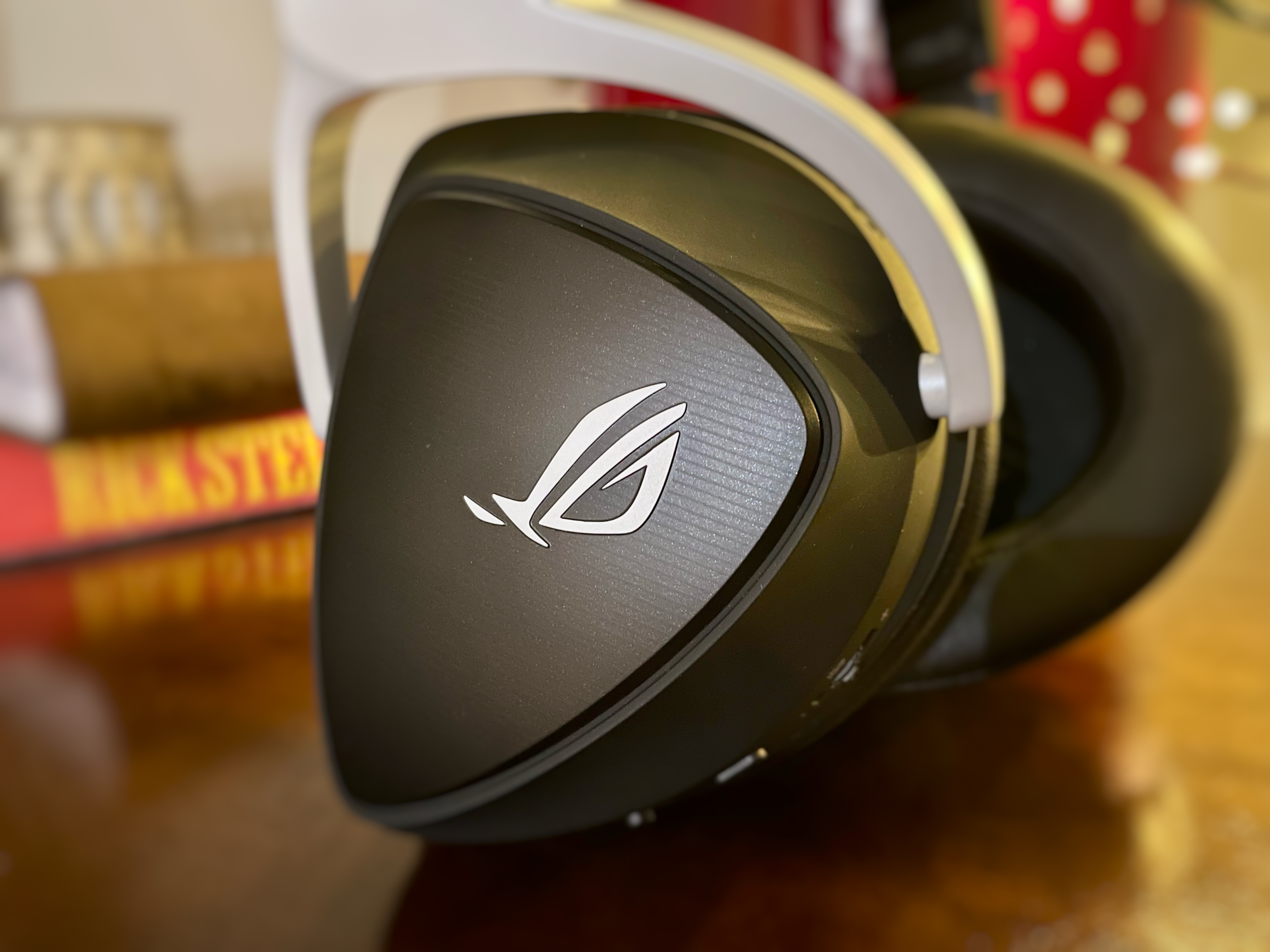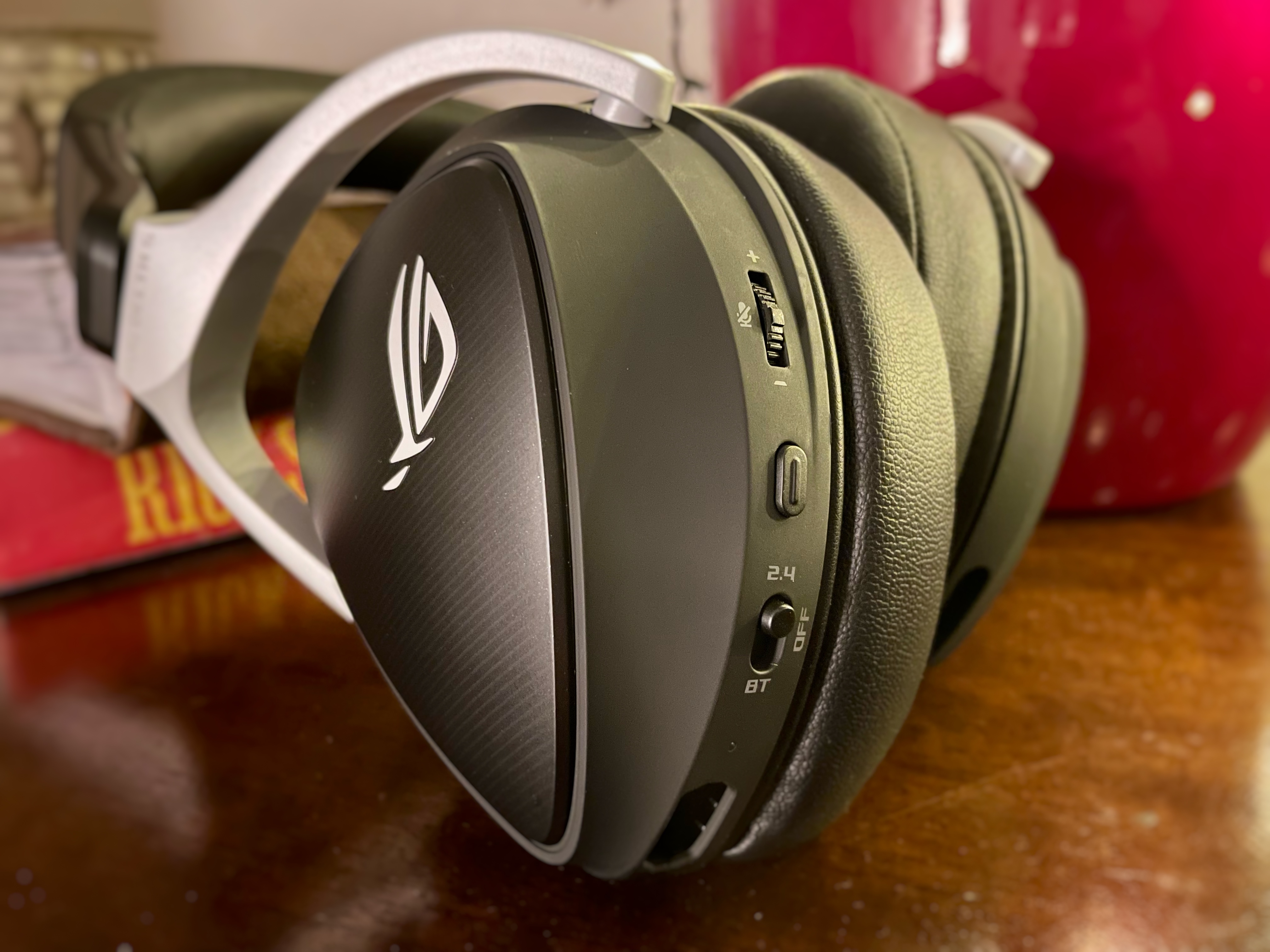Our Verdict
Great comfort and audio quality is tempered by subpar mic performance and laggy Bluetooth. Be careful putting them at full volume. Though, at least you’ll like what you hear before everything goes eerily silent.
For
- Strong audio
- Excellent battery life
- Comfy for long periods
Against
- Issues with volume
- Armoury crate is finicky
- Poor microphone quality
PC Gamer's got your back
Have you ever worn a headset that damn near destroyed your hearing? Well let me introduce you to the Asus ROG Delta S Wireless. These unassuming cans get damn loud, and, while they offer excellent audio in games and music there's something a bit glitchy going on here that's seen me using them rather tentatively.
The ROG Delta S is the first of Asus' headsets to offer both 2.4GHz and Bluetooth connectivity, meaning you get a wide range of compatibility and can switch between two devices without needing to re-pair. The range isn’t great for either option, though—you’ll get interference around 10 to 15 metres away from your PC, and lose connection altogether after about 20 metres.
Should you manage to avoid connectivity issues, there's another glaring hurdle waiting to strike with the Delta: Hello hearing loss, my old friend
While the Delta S listening experience is great for the most part—the default audio profile being nice and bassy, with little distortion—even with the headset itself at its lowest volume, I had to set my system volume as low as 1% to keep my ears from bleeding. Turn it up to anything above 20% and the Delta S Wireless will rip your ears a new one.
It's not necessarily a negative—some people like it loud—but it's something to bear in mind if you decide to buy. Forgetting could be dire.
In wireless mode, the Delta S is rated for 25 hours of battery life. Not bad, and with 85% juice out of the box, I actually got 31.5 hours out of it before it died. Going from 100%, you’d probably get closer to 40 hours. That’s significantly more than advertised, although the volume was set at very low. The Delta S Wireless also charged up satisfyingly quickly, so you shouldn’t be out of action for long when they eventually run out.
In part that's probably thanks to a total lack of RGB illumination with the Delta S. Instead of attempting to blind all onlookers in the immediate vicinity, it takes a subtler approach with a tasteful black-and-white colour scheme and a non-aggressive look—unlike some of the products ROG tends to churn out. We wouldn’t quite describe the headset as stealthy, but it’s pretty restrained.

What is decidedly stealthy, however, is the microphone setup. Completely invisible and hidden inside the ear cups the mic adds to the minimal aesthetic. It's a definite visual plus—I never felt like a hopelessly lost fighter pilot who decided to take up Stardew Valley—but it spells bad news for voice performance. Vocal output is muffled, like you’ve been kidnapped and are recording your audio from inside a large duffel bag. The Delta S mic does boast AI-powered beamforming with noise cancellation, but based on these results, I wouldn't worry about a ROG-affiliated Skynet takeover just yet.
The Delta S Wireless is also solidly built, with a sturdy plastic frame that feels like it could take a swift visit to your desk surface after a particularly bad ragequit, and still come up smiling. The problem with all that sturdiness is it makes the Delta S Wireless rather bulky, and you’ll end up looking like an extra who didn’t make it through the Call of Duty casting auditions… “If only I’d brought my skull mask and cape.”
There’s a decent level of adjustability to extend the fit over even the most bulging heads, and the earcups swivel roughly 100 degrees to lie flat. While the padding on the earcups is not the softest I’ve ever felt, it’s far from uncomfortable. I had no problem wearing the Delta S Wireless all day and evening, and there’s no pressure build-up even after a long session. I rarely got the sense the headset was bathing me in velvety luxury while whispering sweet nothings in my ear (except when I was listening to Barry White, of course), but they were certainly comfy.
In-game, which is arguably the most important usage, the Delta S performs admirably. Gunshots in Cyberpunk 2077 blast and boom with such a satisfying intensity that I almost forgot the game’s myriad faults. I gained a new appreciation for the upbeat instrumentation of Stardew Valley and the grim atmospherics of Metro Exodus, something that hundreds of hours with my old SteelSeries Siberia 350 hasn’t captured.

On the software side, the Delta S uses the Asus Armoury Crate app to adjust its settings. It's not our favourite app, but there are tons of different sound optimisation presets, each with a multitude of dials and sliders. You can link each sound profile to different programs, but unfortunately these profiles won’t automatically kick in when the app is running.
Still, while I can’t say I’ve ever felt the need to create a custom sound profile for WinDirStat, the Delta S does come with the option. All that customisation makes the Delta S Wireless highly flexible, and it performs well across games, music, and streaming. The drawback is that Armoury Crate couldn’t detect my Epic Games, so my library of 400 almost entirely unplayed free games had to sadly go untested.
it's hard to find anything truly exciting about the Delta S Wireless.
If you're planning to connect via Bluetooth mode, know that the Delta S was frustratingly laggy in games, outputting audio around a half-second after events happened on-screen. After reaching out to Asus, they recommended I only use the 2.4GHz connection for gaming, while Bluetooth should be used for phone use or saving battery. It's the same case with many Bluetooth headsets, but it's not great for even the most casual of gamers.
This is a strong headset, though it's hard to find anything truly exciting about the Delta S Wireless. Battery life is strong, but something like the similarly priced HyperX Cloud Alpha Wireless lasts longer. I appreciate the range of customisation available but it has meant using the often-finicky Armoury Crate app. Audio is loud, punchy and enjoyable, but lacks the Dolby Atmos support you’ll find in the cheaper Corsair HS80.
Of course, there’s more to it than accidental hearing loss, but it never quite strays into “must-buy” territory. The $200, or £160, asking price is a little costly, but these cans will make a fine purchase if you can get them at a discount, then you can use the spare cash to pair it with best microphones.
Great comfort and audio quality is tempered by subpar mic performance and laggy Bluetooth. Be careful putting them at full volume. Though, at least you’ll like what you hear before everything goes eerily silent.

Alex has been gaming since the heady DOS days of Cool Spot and Day of the Tentacle in the early 1990s. After blogging about FIFA for a number of years, he turned his attention to the vastly superior Football Manager series and is absolutely not obsessed with it. When he's not sending his hapless assistant manager off to press conferences, you can find him building the perfect party in Divinity: Original Sin 2 and planning his next small form factor PC. Just don't ask him about how many hundreds of unplayed games are rotting in his Steam library.


